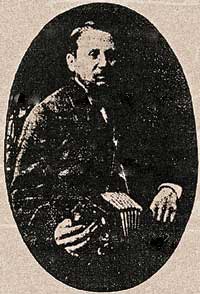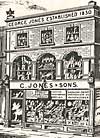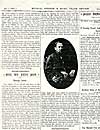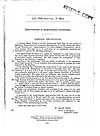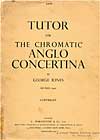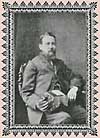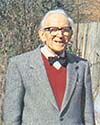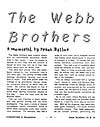This text is transcribed from Concertina Magazine, 13 (Winter 1985): 4–5, and
14 (Spring 1985): 4–7. The manuscript source had passed into the hands of
Frank E. Butler, grandson of George Jones, who sent a copy of it to Concertina
Magazine. Three years later the manuscript was deposited at the British Library,
where it is catalogued as Additional Manuscript 71124 Q (Miscellaneous Letters and Papers),
"Recollections of the manufacture of the English concertina from 1844, by George Jones; [1912].
This account is used in the 'Short History of the Concertina', prefaced to F. E. Butler,
The Concertina (Duffield, 1974). Presented by F. E. Butler, Esq., grandson of George Jones,
29 Aug. 1988, and incorporated in 1993. ff. 331 x 207mm."
Richard Evans's prefatory note to his publication in Concertina Magazine:
Recently, Frank Butler sent Concertina Magazine one of the most fascinating
items that we have ever seen. It is a copy of the text in which his grandfather,
George Jones, the noted Concertina maker, records his recollections of the
development of the Concertina trade during the last century. An edited and
abbreviated version of this memoir appeared in the I.C.A. Newsletter in 1955.
A full and unexpurgated re-issue of it is to be given in the Magazine
(continuing in the next issue.) In additional comments which Frank enclosed,
he noted that Mr. Jones was educated at a School for Dissenters, and would
have been considered educated at the time. Only his spelling has been
corrected. His sentence construction is sometimes confused, making it
difficult to know who worked for whom. Nevertheless, of special value is
the list of employees of Wheatstone and other makers, which may solve some
little known identities. Other comments are included in relevant places
in the text. The "Recollections" text was written in 1913; Mr. Jones died
in 1918.
Notes within the text signed "F.E.B." are by Frank E. Butler.
Recollections of the English Concertina, from 1844,
by George Jones, born February 29th
1832
In 1844 I commenced working for Mr. Austin who made the pans complete
for Wheatstone, the inventor, all done by hand,
outdoor. 1 Mr Dowset made
tops, bellows, frames, and cases—outdoor. Mr. Card—bellows; Mr.
Jackson—metal work; Mr. Rock Chidley and Mr. Dove were finishers, Mr.
Saunders and Mr. Scates tuners. Every part was then made by hand, no
press tools were then in use.
About 1847 Mr. Nickholds and his two sons were engaged to make tools to
produce the metal work, they being machinists, but there was a difficulty
in obtaining note screws. Messrs. Lachenal, Hervy and Shaller
came over from Switzerland and started screw making. They first supplied
screws to DeFrieze, Gas Meter Makers, and was introduced to Wheatstones.
Mr Lachenal being a clever tool maker soon displaced Nickholds and
Sons, who started to make concertinas in Clerkenwell. The second son
being a musical man soon became a tuner.
Mr. Scates left Wheatstone and started to make at 40 Frith Street, Soho.
Mr. Austin then went into the shop to do the woodwork and I with him
but working with Mr. Scates at note fixing, reducing and voicing. My
father thinking the trade would not be any good refused to apprentice me
to Scates. I therefore had to leave.
Parish was shop boy at that time. Being a sharp boy Scates set him in my
place, and he served his time to Scates and became a first-class tuner.
Mr. Austin then left Scates started for himself. My father and him being
great friends it was arranged that I should be fixed to Austin I having
a knowledge somewhat of note work was of great use to him and it was
also a good chance for me to learn every branch which I did, to my great
advantage. Through the treatment of my step-mother I had to leave home,
and my wages were not sufficient to keep me.
I had played the French accordion from very early age and learnt to do
repairs to it. I found no difficulty in getting repairs from shops to do
at home in my lodgings, after my days work was done. Then having a good
voice took engagements at Music Halls and came out as a vocal and
instrumental artist. The German Concertina came out, and I purchased one
and soon was able to master it and I claim to be the first to introduce
it to the public.
I must now leave my work in order to give an account of the progress of
others who commenced business for themselves.
Mr. Scates sold his business to Mr. George Case, the Professor. His shop
was in Bond Street. Not being a practical man failed, sold his interest
and business to Messrs Boosey and Co. who manufactured Concertinas under
the management of Mr. Giles, tuner, with the assistance of Bankham,
Card, Potter, Parish and others. Mr. Rock Chidley started in Oxford
Street, also made harmoniums. Mr. Dove started in Poland Street but made
no headway and arranged with Keith Prowse who purchased the tools etc.
and who produced good instruments by the employment of Bankham, Card,
Potter, and Parrish. There have been several others started to make, but
no one of the original school. Nickhold family all passed away some many
years ago.
This brings me to the firm of Lachenal and Co. When Mr. Lachenal had
completed the vast machinery there was no one but him and his staff who
understood the working of the tools therefore he really was the maker,
and being able to produce the instrument at much lower prices offered to
make and supply the firms if they undertook to take a certain quantity,
which they agreed to but in time failed and broke the agreement. Now
nothing remained but for Lachenal to start and make to supply the
Wholesale Trade which he did and soon captured it, also a good export trade
by making an instrument at a price within the reach of most people. By
this means the instrument became popular. Mr. Lachenal was not a musical
man, was a far seeing man, a clever machinist, and I believe a good man.
I now go on to my own start. As before, I was on the Music Hall stage,
this I continued until I was 19 years of age. My time was up with Mr.
Austin. The German Concertina having one semitone only, I made one with
22 keys for my own use, and later made one with 26 keys full chromatic
scale which was after my greatest success, and without doubt greatly
enhanced the sale of the English Concertina. Being tired of the Music
Hall business, I applied to Messrs Nickholds for work, who was pleased
to accept my services. I was with them for about fifteen months. When
Mr. Austin took premises in Commercial Road with a view to open them in
the General Music Trade, in addition to manufacturing concertinas. He
sent for me and offered me a good position to manage the shop, to teach,
and to supervise the workshop. In the works he himself the woodwork, in
which he was an expert. Here he soon made money too fast and began to
neglect the business, took to drink.
I now saw the thing would not last. I engaged Mr. Shaller a tool maker
of whom I have spoken of to make the tools for the production of metal
work and started to make at first the Anglo-German Concertina in which I
was immediately successful. Sent the first one to Mr. Scates in Dublin,
who gave me a large order. Also arranged with me to supply metal work,
and made arrangements with Bankham, Card and Parrish for production of
the English complete. And now Mr. Austin was taken ill and soon passed
away. There being no one to continue the business the trade fell into my
hands.
In 1853 I commenced to make harmonium reeds. 1867 to make harmoniums.
Made the first portable instrument for Mr Turner, then of Cheapside,
who I worked for for many years. Finding I could not keep up the demand
for the portable, one was sent to France to a firm who improved on mine
and had a very large sale. 1859 made the Celestial English and Anglo
Concertina. 1870 produced the original Broad Steel Reeds. Also extended
the size of the 48 keyed instrument to take them and which produced the
most powerful instrument ever yet made.
I received an order from the Messrs. Bros. Webb for two 56 keyed with
metal tops—a great success and played all over the provinces, continent,
and parts of America, now in use. Later I made 40 key piccolo,
which has been of great value to them. 2
I was introduced to the Salvation Army and asked if I could make for
them the Anglo in pitch to go with brass instruments. This I done and
supplied them for fifteen years. Wrote and published the first Anglo
Tutor, which commanded a great sale. Made 42 key Anglo to play in all
keys, and patented it. Made chromatic melodeon, now known over the
world.
My last effort was an improvement on the portable harmonium 1895. Owing
to the many hinges being required for folding them there was a great
leakage of wind. I therefore inserted a flexible tube each side to
convey the wind from the feeders direct to the reservoir.
I have had fifteen apprentices most of which has done well, served me
faithfully and now I am resting in my 81st year after a happy and
prosperous life only waiting for the last call to eternal rest.
George Jones.
P.S. I may mention that I have had the pleasure of teaching the Bros.
Webb and many other popular artists.
